









| Parent Bug (Elasmucha grisea (Linnaeus, 1758)) |










|
|
Scientific name: Elasmucha grisea (Linnaeus, 1758) Common name: Parent Bug French name: Punaise grisâtre, Punaise du bouleau Order: Heteroptera Family: Acanthosomatidae Wingspan : 7-9 mm. Males are slightly smaller than females. Biotope: Woodland edges, parks and gardens with the condition that Alders or Birches grow there. Geographic area: Europe. Observation period : All year long. The Parent bug over winters as an adult. Males will die in spring after mating. Females will live a bit longer and take care of the eggs and of the juveniles. New adults may be observed from August onwards. |
The Parent Bug is a rather small size shield bug which shows two colour variations. There is a grey form and a brown reddish form. The upper side is covered with many small black dots. The scutellum has usually a dark patch near the base and is paler towards the tip. The sides of the abdomen or connexivum show alternating black and white areas. The legs are greenish. The antennae are pale near the base and black towards the tip. This shield bug is linked to Alders or to Birches. Females lay the eggs under the leaves of these trees. Females stay over the eggs to protect them until the larvae hatch out. They can shake their wings to intimidate any eventual predator (you can observe this by approaching your finger). They continue to sit on the larvae to protect them and then they move all together. There is a similar species Elasmucha fieberi, which also uses Birch as host plant. You can tell it apart with the completely black antennae and with the fore corner of the pronotum, near the eye, which shows a small point protruding beyond the eye. Furthermore the underside is punctuated (underside view required to see this of course). Let's also mention Elasmucha ferrugata, which cannot be mistaken with its very sharp lateral pronotum spines. It is mainly found on Blueberries and Brambles. |
| [To know more about the Parent Bug] [Next picture] [Top] |
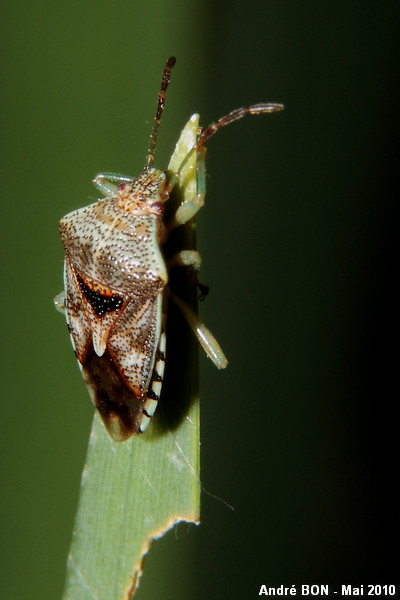
|
I have observed this Parent Bug on the Iris growing in the small pond of my garden, under the shadow of a Birch tree. This is my first observation of this species and this is the beginning of a series which will show from mating to the move of the juveniles with their mother … |
| [To know more about the Parent Bug] [Next picture] [Previous picture] [Top] |
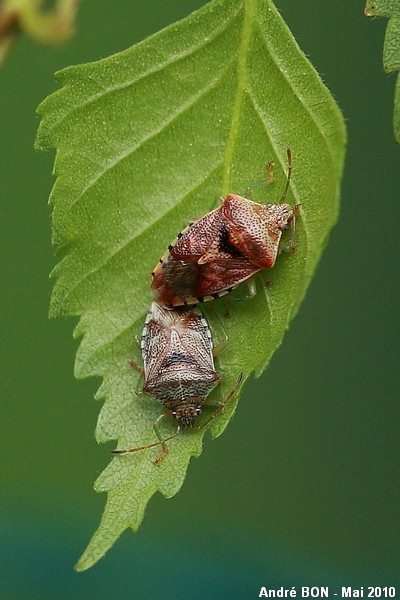
|
Lets' start with mating. |
| [To know more about the Parent Bug] [Next picture] [Previous picture] [Top] |
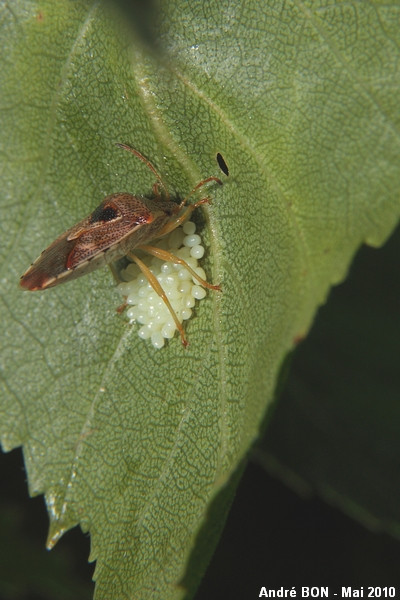
|
Females stay on the eggs to protect them. I have observed many broods in spring 2010. |
| [To know more about the Parent Bug] [Next picture] [Previous picture] [Top] |
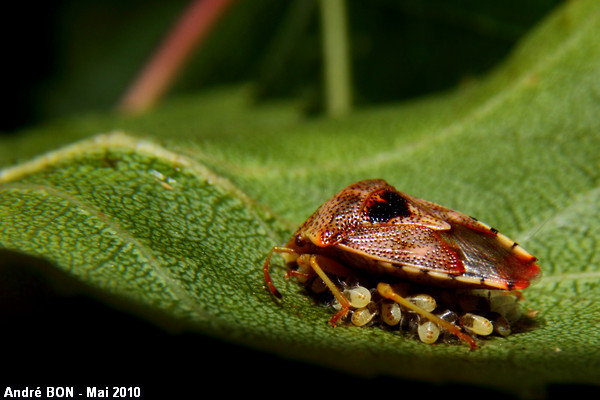
|
I had a look at the eggs every day and here it is, the babies are born. The female keeps on sitting on the larvae to protect them. |
| [To know more about the Parent Bug] [Next picture] [Previous picture] [Top] |
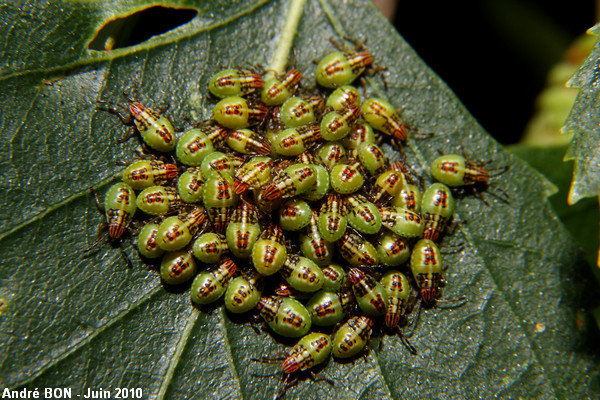
|
The young bugs have a little grown. They stay grouped together. |
| [To know more about the Parent Bug] [Next picture] [Previous picture] [Top] |
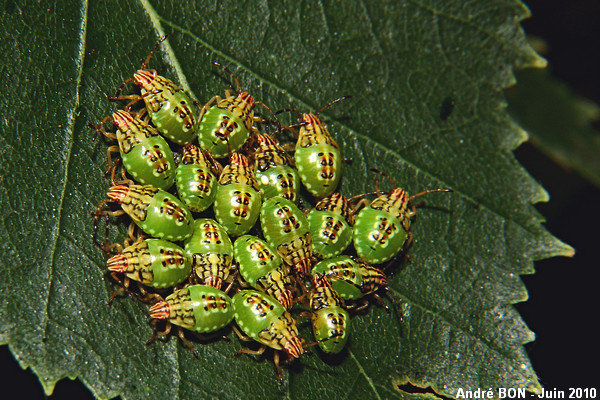
|
Here is another group of young bugs. There are many of them everywhere on the Birch tree. |
| [To know more about the Parent Bug] [Next picture] [Previous picture] [Top] |
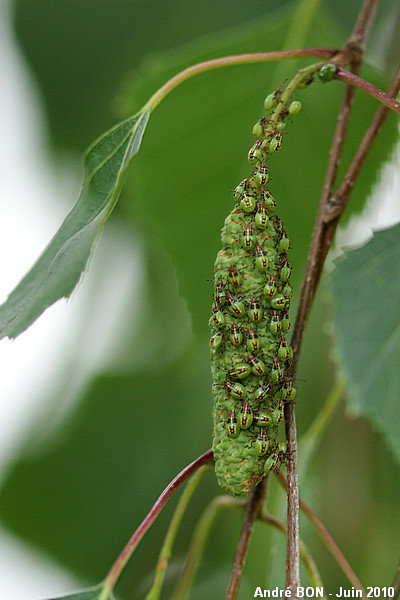
|
The moves of the colony of young bugs are very interesting to observe. |
| [To know more about the Parent Bug] [Next picture] [Previous picture] [Top] |
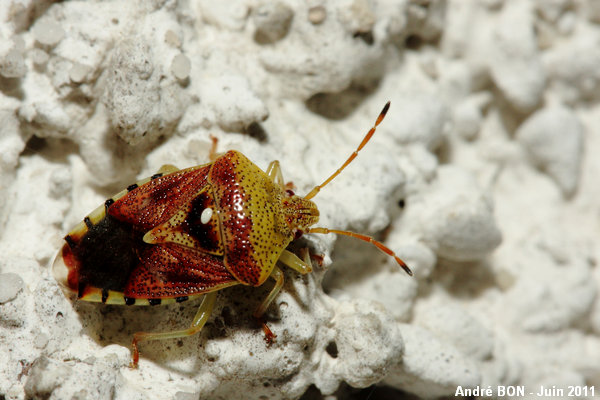
|
The white spot you can see on the scutellum is the egg of an insect whose larva will parasite this Parent Bug. The parasitic insect is certainly a fly of the Tachinidae family. |
| [To know more about the Parent Bug] [Next picture] [Previous picture] [Top] |
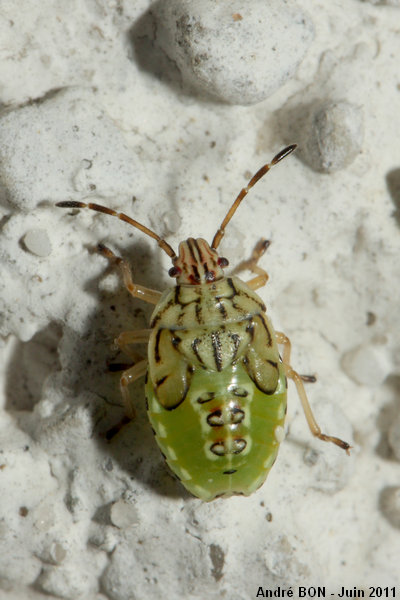
|
This Parent bug is at its fifth instar (it has already moulted four times). It will become adult after the next moult. |
| [To know more about the Parent Bug] [Previous picture] [Top] |
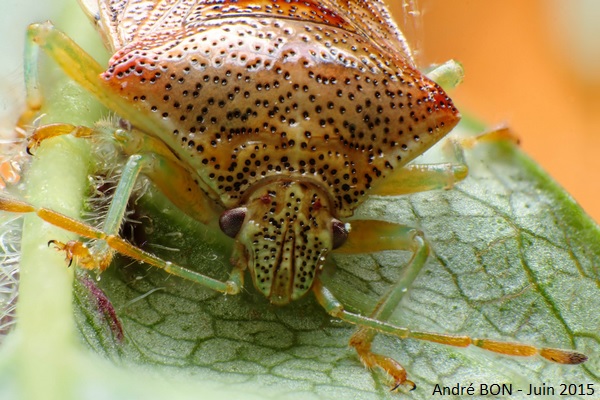
|
This Parent Bug, perfectly immobile on a leaf, allowed me to do some photo stacking. This is not very common with living insects. This picture is a merge of 49 shots. |